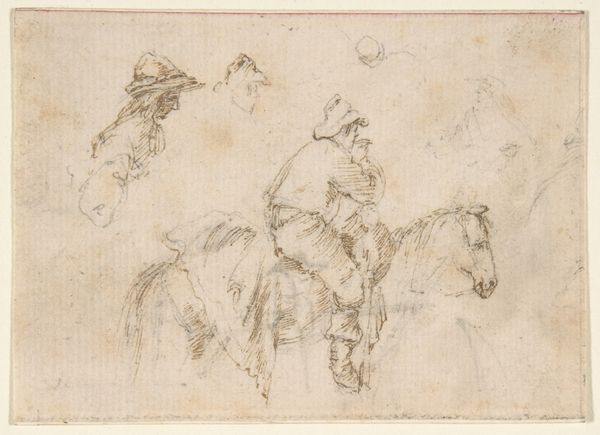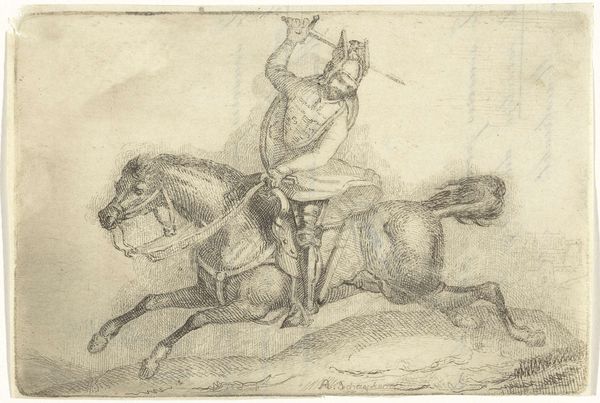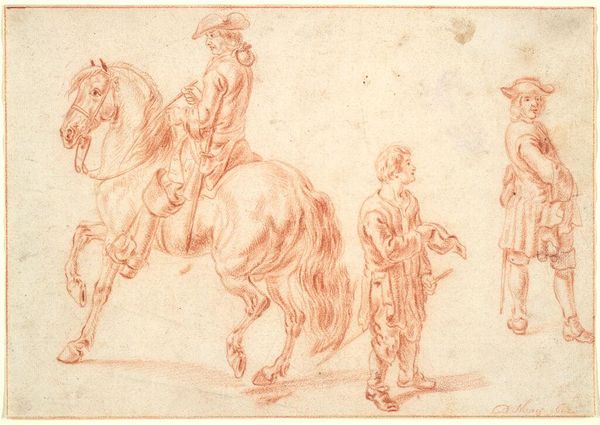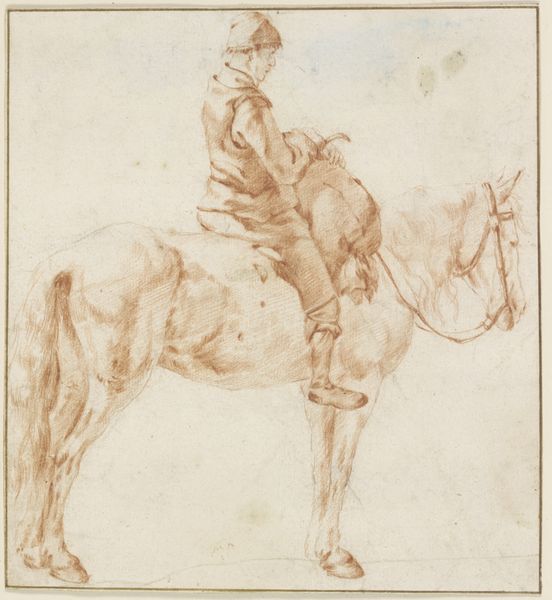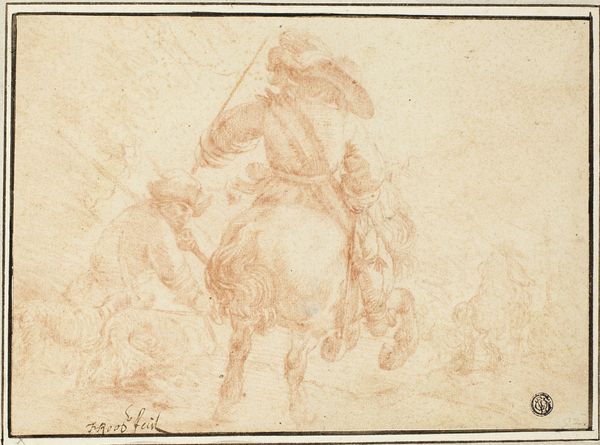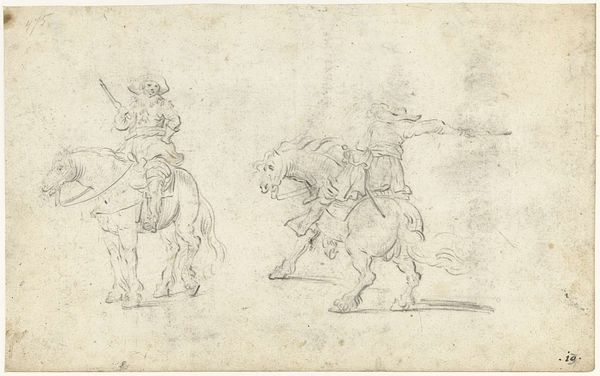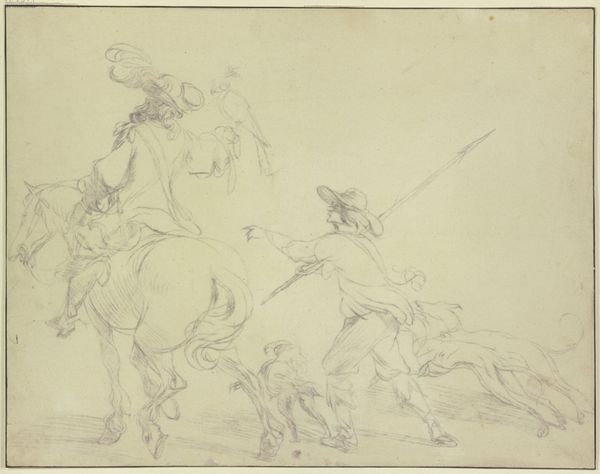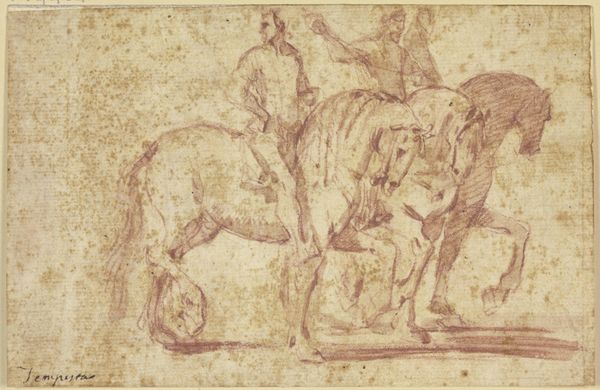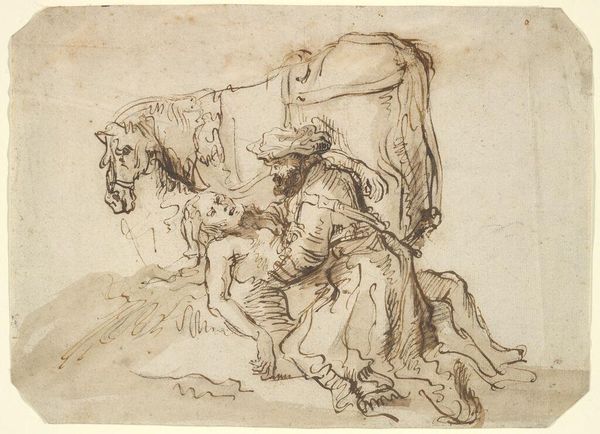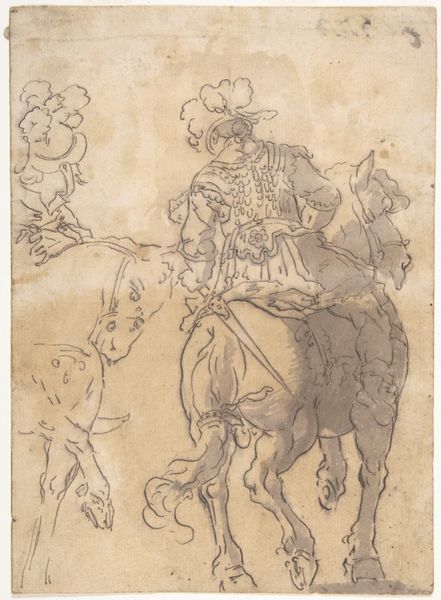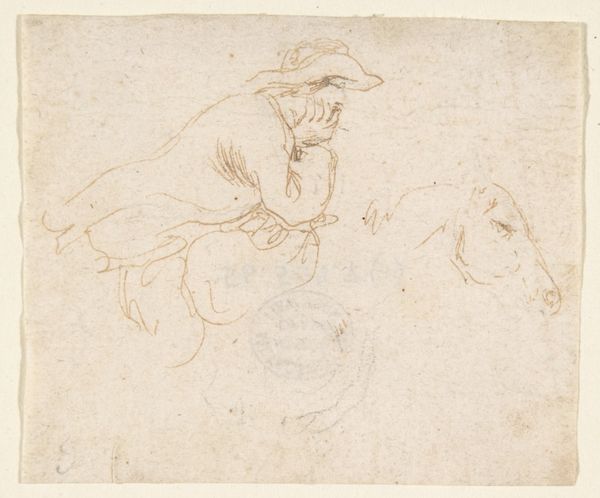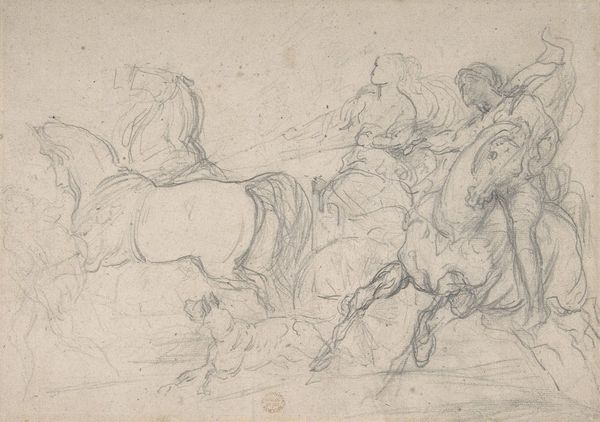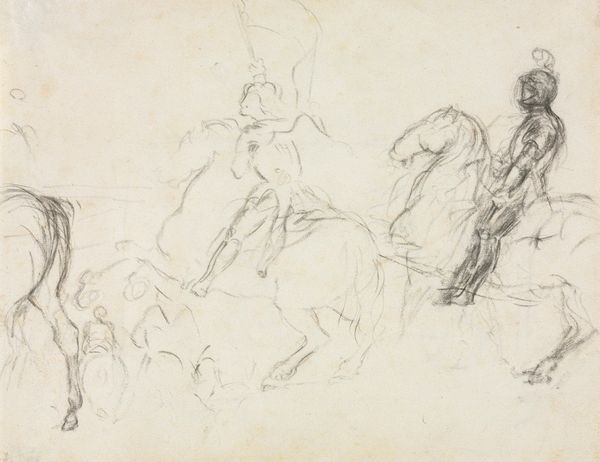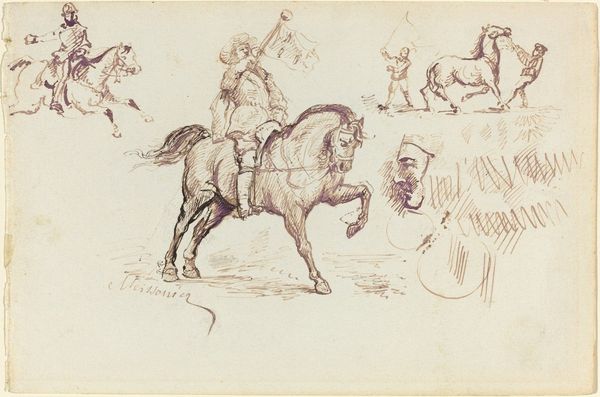
Study for an Equestrian Portrait, Possibly that of Albert de Ligne, Count of Arenberg c. 1628 - 1632
0:00
0:00
drawing, pen
#
portrait
#
drawing
#
imaginative character sketch
#
toned paper
#
light pencil work
#
baroque
#
pencil sketch
#
incomplete sketchy
#
landscape
#
personal sketchbook
#
ink drawing experimentation
#
sketchbook drawing
#
pen
#
sketchbook art
#
fantasy sketch
Copyright: Public Domain: Artvee
Curator: This drawing is attributed to Anthony van Dyck, dating from around 1628 to 1632. It's thought to be a study for an equestrian portrait, possibly of Albert de Ligne, Count of Arenberg. Editor: The sketch feels energetic and fluid. There’s a sense of movement in the horse and rider that leaps off the toned paper, a powerful impression created with what looks like very light pencil work. Curator: Absolutely. Van Dyck was deeply invested in the preparatory process. Looking at the application of the pen and the tonal variation within the toned paper itself gives some hints to its social status as either work for higher commission, practice of an image to come, or quick idea for a portrait or sketch to be proposed. Editor: I find the symbolism fascinating. The horse, a rearing steed no less, represents power, nobility, and control, ideals central to aristocratic identity during the Baroque era. Van Dyck is visualizing the sitter’s ambition and status. Curator: Precisely, and consider the craft behind its reproduction; Van Dyck likely invested himself in its image to create the material from a set commission to be reviewed by someone else of power and wealth to grant the material means for living and working on other commissioned work. It reflects how wealth reproduces itself. Editor: But even in a preliminary sketch, the clothing worn by the Count acts like symbolism itself. His ruffled collar, plumed hat, even the suggestion of armor speak volumes. It’s a coded visual language that still resonates today. We immediately understand him as a figure of authority. Curator: Yes, it showcases the commodification of imagery. Van Dyck had to negotiate the representation of power and status, becoming a skilled negotiator of social symbols within the marketplace of art, offering various preliminary iterations. Editor: I appreciate your point. Looking at this sketch now, I’m struck by the almost theatrical drama in the rider’s pose, and it's clear how symbols both construct and reinforce hierarchies in that social world. Curator: Exactly. Studying the material conditions under which this sketch was made reveals much about the complex interplay of artistic creation, commerce, and social standing within the art ecosystem of the time. Editor: Well, considering the symbolic elements alongside the craft certainly provides an unexpectedly holistic viewing experience, for myself as well as for others too I'm sure!
Comments
No comments
Be the first to comment and join the conversation on the ultimate creative platform.
